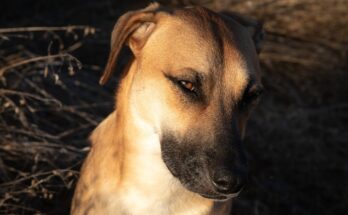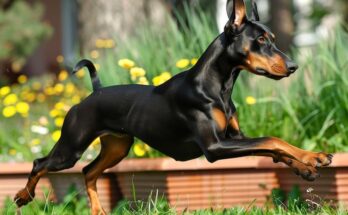If you want to imagine an elegant and rather mysterious breed of dog, then, the Siberian Husky White is one. Since it boasts clean and velvety fur without the slightest hint of the inescapable Photoshop and those sharp piercing eyes, it’s impossible not to do the first love.
A Unique Coat and Appearance
Siberian Huskies are sure to make you notice, first of all, their immaculate white coat. This unique coat also means that they have a marked appearance which draws attention to their lupine nature. Add to this their beautiful blue or multicolored eyes, and you realize that you have a dog that will attract attention wherever they go.
The Science Behind the White Coat
The white coat in a Siberian Husky White is derived from a recessive allele that makes both the parent dogs need to pass the allele to sire white puppies. This makes them a little less common than other Huskies, which is all the more attractive!
Personality Traits of the Siberian Husky White
These dogs are active breeds, and proud of it; this is exhibited by the White Siberian Husky. But what distinguishes this breed in terms of behavior? Okay, let’s look at the descriptive features.
Playfulness and Energy
Should you expect your White Siberian Husky to become what we call a couch potato dog, well then this breed might not suit you best. This breed is very active, and as such I wish to ensure that it is active enough before it can be handled properly. They thrive to play, run, and be active thus are ideal companions to persons who love outdoor activities.
Independence and Stubbornness
Again, in addition to playfulness, all the identified personalities imply a certain degree of self-sufficiency. Siberian Husky White and all other variants of Husky breeds have a reputation as being very stubborn indeed. It may be difficult to train them because they are stubborn and mostly like to act on their own.
History and Origin of the Siberian Husky White
To better know Siberian Husky White it will be important to familiarize ourselves with their background. These dogs were ground in the territories of Siberia, from which they were selected intentionally to work and sustain themselves within the severest climate.
Origins in Siberia
The White Siberian Husky origin and history are from Siberia and its native inhabitants, the Chukchi. These strong dogs were made to pull sleds for a long distance, withstand extremely low temperatures, and be pack-oriented. Still, the histories of these teams are primarily focused on their hardworking nature and ability to persevere.
How the White Coat Evolved Over Time
Siberia still gets snow and this may have been one of the reasons for developing white coats to help them camouflage. These dogs enjoyed a healthy diet, the ability to handle cold by staying in the shade during the day and being white in color when the surroundings were all covered in snow meant that any predator would have a hard time tracking these dogs down.

Living with White Siberian Husky
Adopting a new Siberian Husky White is, therefore, a lifestyle choice. The care this breed needs is very important, particularly on issues to do with their exercise and feeding.
Exercise Needs and Mental Stimulation
This colorful canine is not an exception to the high energy levels associated with Huskies. They require regular exercise and mental activities to play, as any form of boredom leads to destructive behavior.
The Importance of Physical Activity
An ordinary stroll around the house will not suffice for the Siberian Husky White. These dogs were built for getting in a lot of activity and require extended walks, jogs, or even being able to pull a sled if you happen to have one! Otherwise, they may get bored and acquire quite unhealthy habits.
Feeding and Nutrition for a Healthy Husky
A favorable diet is a major aspect that has to be taken so that your White Siberian Husky gets in good health and energy. One with the Huskies has to ensure it feeds the high metabolism rate and the appropriate nutrient input.
Best Diet Practices
This means that the Siberian Husky White diet should be one of the richest in proteins and fat. In order to prepare a healthy diet for your dog, your dog should be fed with a highly standard diet food and 2-3 days raw or cooked meat.
Grooming a Siberian Husky White
Still, all that beauty of the gorgeous white coat does not come about without a lot of work. Bathing of your Siberian Husky White is crucial in maintaining the health of their fur as well as reducing shedding of fur.
Shedding and Coat Maintenance
Siberian huskies shed their coats twice a year and the Siberian Husky White will do the same. At this stage, they lose their undercoat extensively, so they require consistent grooming to avoid features getting out of hand.
Dealing with Seasonal Shedding
Brushing your Siberian Husky White daily during shedding season can help reduce the amount of fur left around your home. Additionally, investing in a high-quality vacuum is a smart move!
Health Concerns for a Siberian Husky White
And that, like all breeds, the Siberian Husky White is also predisposed to some genetic disorders. This means that the mass should take its cat for a vet check-up often so that in case of developing a problem it is detected early.
Genetic Conditions and Lifespan
Diseases related to this breed of dog include hip bone deviation and another disease that affects the eyes, blindness. Proper care and grooming of these dogs will ensure they last for 12 to 15 years.
Regular Health Check-ups
Preventive actions should be required in order to keep your Siberian Husky White in good health. Taking your pet to the vet often , feeding it right, and ensuring that it exercises can reduce diseases.
Training Your Siberian Husky White
The Siberian Husky White sometimes can be a challenge when one wants to train this type of breed. The dogs are bright but have many things that can cause them to lose focus which makes it a bit hard for them during the training.
The Challenge of Training a Husky
In particular, Huskies are quite stubborn and self-willed, so training may turn into a real challenge. If one is lucky to work with a Siberian Husky White then it is very important to be persistent. Your biggest reinforcements here are positivity and patience!
Training Methods That Work
Positive conditioning is quite effective for the Siberian Husky White; you can use treats, toys, and lots of encouragement. It should also be noted that it is effective to organize training sessions short and entertaining so that the children can pay attention to them.
Socialization Tips
Every Husky needs proper socialization at a tender age in any setting. Introducing your Siberian Husky White to different areas, individuals, and other creatures, will help build a more well-rounded adult.
Why the Siberian Husky White is a Great Family Pet
However, the Siberian Husky White has its fair share of problems; nevertheless, the breed can be an outstanding family pet. Thus, origin and loyalty make them capable of structuring intense relationships with their human counterparts.
Companionship and Loyalty
Siberian Husky White dogs are sociable and loyal and are mainly known for the loyalty they show to their masters. They are attached to their family and dependent on affection, which means that they are great for families who will have time to devote to the Jindo’s needs.
Interaction with Kids and Other Pets
The Siberian Husky White is friendly with children and other animals as long as they are trained from a tender age. This should encourage you to consider getting one as they are best suited to be around energetic children.
Challenges of Owning a Siberian Husky White
However, like with any breed, Siberian Husky White can become a real source of great happiness, but they also have their own problems. You need time, patience, and effort to be able to own one of these dogs.
High Energy Levels and Destructive Behaviors
Siberian Husky White is prone to become destructive if it is not provided with regular exercise. They are by nature diggers and chewers, and if given an opportunity, they will channel their energy on digging or chewing your furniture or yard.
Potential Escape Artists
Huskies are intelligent dogs and they like to run away from home. With the Siberian Husky White, you can and will find yourself chasing a very fast runner, or tirelessly digging under the fence, if they feel bored or curious.
Is a Siberian Husky White Right for You?
This is why potential owners should first consider whether or not they are prepared to take a Siberian Husky White into their home. These dogs are suitable for homes where they will be wanted and need to be active most of the time.
The Ideal Owner for This Breed
Siberian Husky White requires an owner who loves nature, who has time to work out and train, and who is prepared for the duties of having an active breed.
Conclusion
It is fun and at the same time quite taxing to own a Siberian Husky White. They will be wonderful additions to friend circles due to the beauty, energy, and loyalty they bring into relationships but they are high maintenance. If you are ready for that responsibility then a White Siberian Husky can indeed be a great addition to your home.
FAQs
-
How often practice does a Siberian Husky White need?
The average Siberian Husky White needs at least 1-2 hours of rigorous kind of activity every day to rightfully enjoy a healthy and playful life.
-
Are Siberian Husky Whites good with children?
Yes, they are mainly kind to children, remarkably if they have been trained as such from an early age.
-
Do Siberian Husky Whites shed a lot?
Yes, they shed heavily more especially during the molting periods when they blow their coat.
-
Are Siberian Husky Whites easy to train?
They are smart but somewhat headstrong, so there are better and worse ways to go about the training process.
-
What should I feed my Siberian Husky White?
A high-protein diet with quality dog food, and casual raw or cooked meats, is ideal for this breed.



